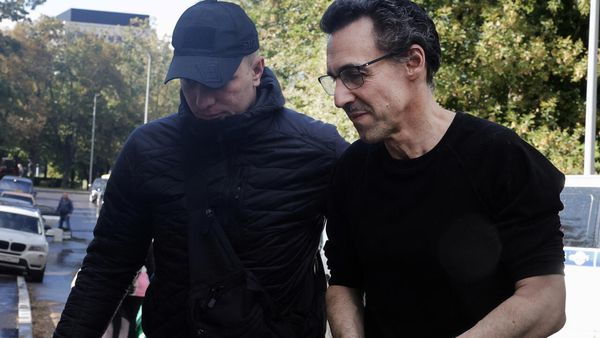
As I complete another round of monthly analysis, the reality is I continue to “lose my religion” as it relates professional to classic technical patterns.
The reality is algorithms are not programmed to follow the classic patterns we learned decades ago, meaning our analysis of trend (price direction over time) needs to evolve.
That being said, I still see some interesting developments on the long-term monthly charts for Teucrium CORN, SOYB, and WEAT funds.
As a new year gets under way I want talk about how I’ve “lost my religion”professionally, figuratively speaking. You may be familiar with the story of how I got into this business: My fascination with what factors came into play during the stock market collapse of October 1987. From there I would get my Series 3 license and go to work at a small brokerage office in Wichita, Kansas. A gentleman named Ray Fritzemeyer became my mentor and introduced me to the world of technical analysis. One of the first things I did, with what little money I had as a young broker, was buy John J. Murphy’s book “Technical Analysis of the Futures Market” (1986 edition). It has been on my desk since, or roughly 35 years[i].
I used it as a textbook to teach myself how to study charts, while incorporating Ray’s real-world view as well. If you were to skim through my copy of the book you would see nearly as much writing in the margins as what is on the printed page. I’ve made notes, worked out theories, scratched out certain parts, and added commentary throughout. Much as my great-grandmother did in her Bible back in the day.
My next birthday will mark 6 decades of me annoying people on this earth, so if you’ve done the math you know I was still relatively young when I first became interested in the study of price charts. But I’ve gotten older, as most of us get the opportunity to do, and the reality is I lean more toward Warren Buffett’s thoughts on the practice these days. The Oracle of Omaha was quoted as saying, “I realized technical analysis didn’t work when I turned the chart upside down and didn’t get a different answer.” Granted, this was likely said with some of Mr. Buffett’s legendary humor, but the bottom line is he has no use for chart patterns, preferring to study stock fundamentals instead.
Old habits die hard, though, as those of you following along with my Monthly Analysis have likely noticed. Each month, I discuss the technical picture on long-term monthly charts for 25 markets. Of those, and I still have a hard time saying this without laughing, natural gas seems to be following technical patterns the best. Let that sink in for a moment.

As we set sail on 2025 I could talk about the long-term bearish reversal patterns on monthly charts completed by both the S&P 500 ($INX) and Dow Jones Industrial Average ($DOWI) and the bullish breakout seen on the same chart for the US dollar index ($DXY), but the question remains the same: Do these mean anything if algorithms aren’t triggered by classic technical analysis patterns? The investment-program coders I’ve talked to are nearly universal in their disregard for such things, yet classic technical analysis remains a hot topic in the industry and on social media, which tells us all we need to know about the subject.
That being said, I’m going to take one last look, possibly, at the Grains sector based on the well-known advice of legendary investor Peter Lynch, “Trade what you know”. However, as with most things, I’ve revised this advice to fit my profession, “Talk about what you know”. This thought always makes me smile at the memory of the late Mark Pearson purposefully, and with a gleeful twinkle in his eye, asking me about the cow-calf industry on the Iowa Public Television Market to Market program, fully knowing I had no idea.
But back to the Grains sector. This is what I see on the long-term monthly charts for the Teucrium CORN, SOYB, and WEAT funds, a way for stock investors to be in Grains without having to deal with cash markets and/or futures spreads:

The Teucrium Corn Fund (CORN) remains in a major (long-term) uptrend. CORN could’ve been bought near the August settlement of $17.70. Additional longs could be established on buy stops above the previous 4-month high of $18.85 during January. Sell stops would be moved to below the previous 4-month low of $17.45 (October 2024), or left below the major low of $17.02 from August 2024.

The Teucrium Soybean Fund (SOYB) completed a bullish spike reversal during December, moving to a major uptrend as it settled at $21.48, up $0.28 for the month. Investors could buy near the December settlement of $21.48 with sell stops below the December low of $20.20.

The Teucrium Wheat Fund (WEAT): I’m not sure what to make of WEAT at this time. However, if I apply the idea of wheat’s characteristic Head Fake Phenomenon (Wheat markets/contracts have a tendency to take out support or resistance, then go back in the direction they were previously headed) and the Krampus Countdown (Don’t be long wheat in December), I could still make the argument the major trend is up. Additionally, WEAT completed another bullish spike reversal at the end of December. Investors might’ve gone long WEAT near the August settlement of $4.97. If not, based on the above-mentioned Krampus Countdown, long-term long positions could be established near the December settlement of $4.82 with a sell stop below the December low of $4.65.
[i] Interestingly enough, on the blank page at the front of the book I wrote the date of purchase: January 10, 1990. So it has indeed by 35 years.







